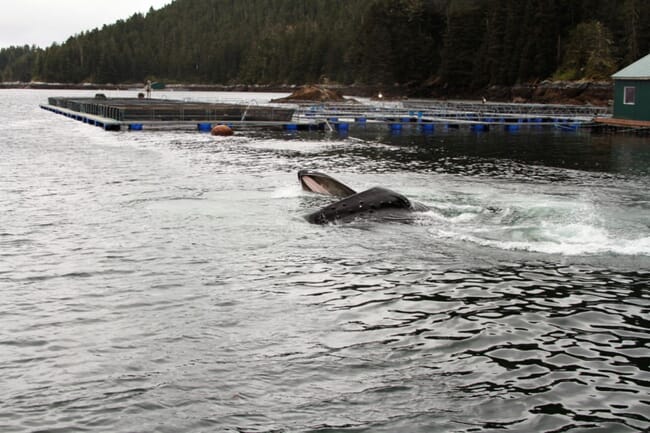Hatcheries are used to augment wild salmon stocks, growing the juvenile salmon for around 18 months before releasing them into the sea. And a paper published yesterday by the Royal Society suggests that a number of whales appear to be feeding on smolts released from the facilities.

© Chenoweth et al.
The research was led by Ellen Chenoweth from the University of Alaska Fairbanks, who began the project after seeing footage that hatchery staff had taken of whales feeding close to the smolt release sites. Her team monitored five sites on the eastern side of Baranof Island between 2010 and 2015, recording whales’ behaviour every morning and afternoon. The researchers also tagged individual whales to track where they feed.
They found that, while hatchery salmon isn’t an important food source for the humpbacks overall, it does appear to be crucial for a small number of individual whales during the smolt release season.
“For the individuals that appear to specialise there, it is part of a seasonal feeding strategy and, in some cases, they return year after year,” Chenoweth told the New Scientist.
What makes the behavior so remarkable is how the giant cetaceans are able to feed among the network of docks and holding pens in relatively shallow water, very close to shore. This apparent ability to adapt to new prey sources may be key to sustaining the humpback population in a changing ocean. However, the fact that these smolts make an important contribution to local fisheries makes the emergence of the trend a concern for the Southeast Alaskan economy, especially now that the local humpback population is on the rise.
In an attempt to mitigate the impact of the whales, hatchery staff have employed a number of alternative strategies to the traditional mass release of smolts, the paper goes on to explain. One of the most widespread methods was to release fish slowly over time. Staff also tried releasing fish at night, on an outgoing tide, or in a less sheltered location. The most intensive strategy employed by NSRAA was to release salmon at a larger size so that they will move from the littoral habitat more quickly. However, the researchers say, further studies will be required to isolate the effects of these strategies on marine survival.


